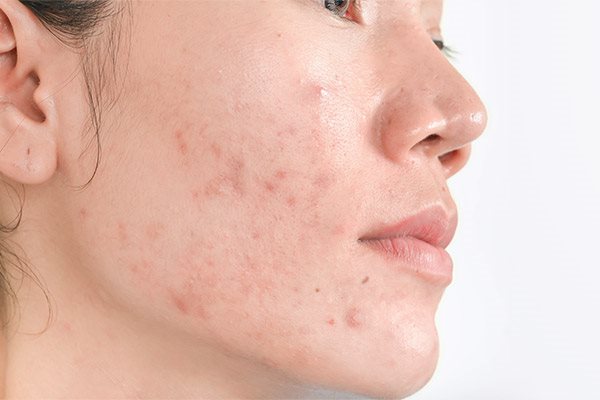Hyperpigmentation, commonly known as dark spots, age spots, or melasma, is a skin condition characterized by the appearance of darker patches on the skin. These spots can result from various factors, including sun exposure, hormonal changes, and skin injuries. Thankfully, there are several effective skin treatments available to reduce or eliminate hyperpigmentation and achieve a more even skin tone. Let’s explore the most effective options for treating dark spots and improving skin complexion.
1. Topical Treatments
Topical treatments are the most common and accessible options for addressing hyperpigmentation. These treatments work directly on the skin to lighten dark spots and even out skin tone.
A. Vitamin C
- How It Works: Vitamin C is a potent antioxidant that inhibits melanin production, which helps to lighten hyperpigmentation.
- Products: Look for serums or creams with stable forms of Vitamin C like ascorbic acid, sodium ascorbic phosphate, or magnesium ascorbic phosphate.
- Usage: Apply Vitamin C serum in the morning before sunscreen.
B. Retinoids
- How It Works: Retinoids, including retinol and tretinoin, promote cell turnover and reduce melanin production.
- Products: Over-the-counter retinol or prescription tretinoin.
- Usage: Apply retinoid products at night, as they can make your skin sensitive to sunlight.
C. Hydroquinone
- How It Works: Hydroquinone inhibits tyrosinase, the enzyme responsible for melanin production.
- Products: Available in both over-the-counter and prescription strengths.
- Usage: Apply hydroquinone cream once or twice daily. Use it under the guidance of a dermatologist due to potential side effects with long-term use.
D. Niacinamide
- How It Works: Niacinamide (Vitamin B3) reduces melanin transfer to skin cells and has anti-inflammatory properties.
- Products: Look for serums or creams containing 5% niacinamide.
- Usage: Apply niacinamide in the morning and evening.
E. Alpha Hydroxy Acids (AHAs)
- How It Works: AHAs, such as glycolic acid and lactic acid, exfoliate the skin and promote cell turnover.
- Products: Exfoliating toners, serums, or masks.
- Usage: Use AHAs 2–3 times a week, preferably in the evening.
F. Beta Hydroxy Acid (Salicylic Acid)
- How It Works: Salicylic acid exfoliates the skin and can penetrate pores, making it effective for both dark spots and acne.
- Products: Available in cleansers, serums, or spot treatments.
- Usage: Apply to affected areas 2–3 times a week or as directed.
2. In-Office Dermatological Treatments
For more severe cases of hyperpigmentation, professional treatments may offer quicker and more significant results.
A. Chemical Peels
- How It Works: Chemical peels use acids to remove the outer layer of skin, revealing new, less pigmented skin underneath.
- Types: Light peels (glycolic acid), medium peels (trichloroacetic acid), or deep peels (phenol).
- Considerations: Best performed by a dermatologist or licensed esthetician. Recovery time varies depending on the strength of the peel.
B. Laser Therapy
- How It Works: Lasers target melanin in the skin to break up dark spots.
- Types: Fractional lasers, IPL (Intense Pulsed Light), and Q-switched lasers.
- Considerations: Multiple sessions may be required, and downtime varies based on the type of laser used.
C. Micro needling
- How It Works: Micro needling involves using fine needles to create micro-injuries in the skin, stimulating collagen production and improving pigmentation.
- Considerations: Often combined with topical treatments for enhanced results.
D. Cryotherapy
- How It Works: Cryotherapy uses liquid nitrogen to freeze and destroy pigmented cells.
- Considerations: This treatment may cause temporary redness or scabbing.
3. Natural Remedies
Natural remedies can complement other treatments but may not be as effective for severe hyperpigmentation.
A. Aloe Vera
- How It Works: Aloe vera has soothing properties and may reduce pigmentation.
- Usage: Apply fresh aloe vera gel to the affected area daily.
B. Green Tea Extract
- How It Works: Green tea contains polyphenols that can reduce melanin production.
- Usage: Apply green tea extract or cooled green tea bags to the skin.
C. Licorice Extract
- How It Works: Licorice extract contains glabridin, which inhibits melanin production.
- Products: Look for creams or serums containing licorice extract.
4. Preventive Measures
Prevention is key to managing and avoiding future hyperpigmentation.
A. Sunscreen
- How It Works: Sunscreen protects the skin from UV rays, which can worsen hyperpigmentation.
- Usage: Apply a broad-spectrum SPF 30 or higher daily, even on cloudy days.
B. Avoid Sun Exposure
- How It Works: Direct sun exposure increases melanin production.
- Tips: Wear protective clothing and seek shade when the sun is at its peak.
C. Avoid Picking or Scratching
- How It Works: Picking at the skin can lead to post-inflammatory hyperpigmentation.
- Tips: Treat skin injuries with gentle care and use soothing products.
Conclusion
Managing hyperpigmentation and dark spots involves a combination of effective treatments, preventive measures, and sometimes professional interventions. By incorporating topical treatments like Vitamin C and retinoids, exploring in-office procedures like chemical peels or laser therapy, and adopting preventive skincare habits, you can significantly improve the appearance of dark spots and achieve a more even skin tone.
Remember, consistency is key, and it’s always a good idea to consult with a dermatologist to tailor a treatment plan that’s right for your specific skin type and condition





Comments